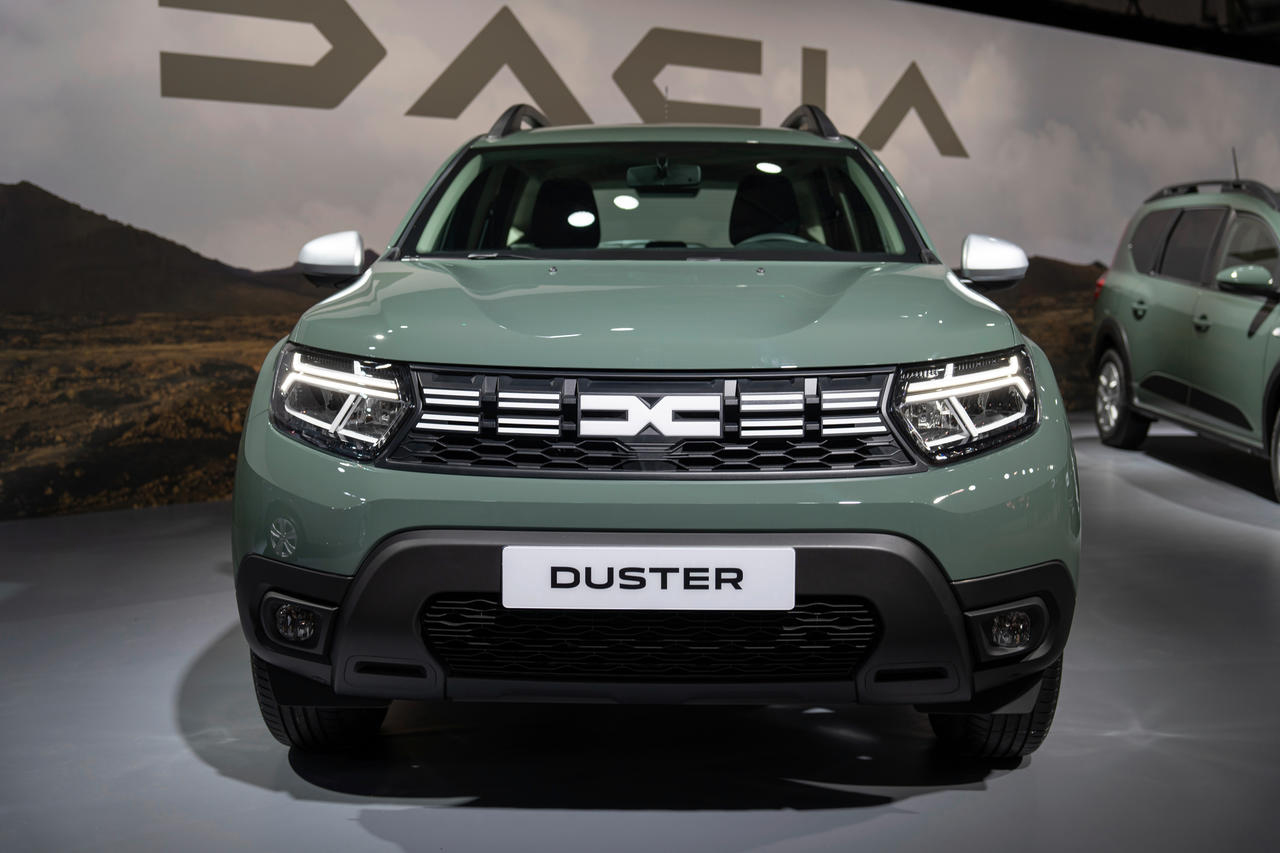In October 2009, Mitsubishi unveiled the PX-MiEV concept at the Tokyo Auto Salon - a hybrid SUV that can be powered by both traditional means and a 230 V electrical network (according to Enel, the outlet supplies 230, not "two-twenty") promising an autonomy of 50 km/l, or in simpler terms, 2 l/100 km. "Skepticism" doesn't seem a strong enough word to express the reception of what would become, four years later, the Outlander PHEV, boasting a declared consumption of 1.9 l/100 km. In Europe (though not in all countries), the Outlander PHEV was introduced last year and has only recently reached the Carpato-Danubian-Pontic region, following a surge in demand from Scandinavia and the Netherlands, prompting Mitsubishi to double its production to nearly 50,000 units per year. So, it might be time to set skepticism aside and take a closer look at this car.
Exterior
Nothing brings me more joy than seeing a manufacturer closely follow through with the concept, presenting a final product that is as close as possible to what was promised at auto shows. From this perspective, the Outlander PHEV doesn't disappoint - it retains the same robust, rounded look showcased four years ago in Tokyo, reminiscent of RoboCop's armor. Yes, the headlights are larger, the front mounts are no longer blackened for the "floating roof" effect, and overall, the car's lines seem to have been tamed, but all these changes are necessary in the realm of regulations. After all, not all hybrids can look like the i8...
Interior
The interior of the Outlander PHEV presents two minor issues and one significant advantage. Firstly, the issues: the first is the MMC (Mitsubishi Multi Communication) interface - given that we live in the era of smartphones and tablets, any latency, no matter how small, from a touchscreen can only be frustrating. The second issue pertains to comfort: the suspension doesn't seem to have been adequately adjusted to cope with the additional 200 kilograms that the PHEV carries compared to the regular Outlander. As a result, the car seems more inclined to tackle potholes than smoothly glide over them, and the somewhat firm seats don't help the situation. However, as mentioned earlier, these issues are minor, and one can get used to occasional jolts as well as the central screen's latency. The significant plus, on the other hand, is genuinely substantial. I am, of course, referring to the interior space. Although the option for a third row of seats has been eliminated, the interior is downright cavernous. The "mere" 463 liters of trunk space (only 14 liters smaller than the diesel Outlander) is more than sufficient for any family, and the rear seats seem tailor-made for robust basketball players. In addition, the finishes are of high quality, and the interior design is much more impressive in reality than pictures might lead you to believe - nothing to criticize here.
Technical
On the technical side, the Outlander PHEV shines: it is a plant with three engines, two inverters, and an 80-cell Li-ion battery, which surprises me that it doesn't come standard with its team of engineers. Let's start with the engines: we have two electric motors of 82 horsepower each, developing 135 Nm in the front and 195 Nm in the back. The front unit forms a hybrid system with a two-liter, 122 HP petrol engine, and 190 Nm. All these engines can operate in three modes: "EV" - a mode in which only electric motors are used for propulsion, making you feel less like a driver and more like a tram driver; "Series Hybrid" - the electric motors continue to propel the car, but the internal combustion engine is used as a generator and hums almost imperceptibly at a constant speed; "Parallel Hybrid" - yes, you guessed it, all three engines work in tandem if you exceed 120 km/h or need an extra boost. I could talk endlessly about how smart this system is and how well it accelerates up to 100 km/h even with the "ECO" mode activated, which softens the accelerator pedal and tries as much as possible not to engage the internal combustion engine. However, the conclusion is as follows: yes, it consumes 1.9 l/100 km, but only in the first hundred kilometers, assuming you start your journey with a charged battery. Why? Well, the petrol engine can only charge the batteries up to 80% in 40 minutes, consuming 1 liter of petrol, which means you get a range of about 40 km in 40 minutes, or 60 km in an hour. So if you stay below 60 km/h, you could keep going until the 45 liters of petrol in the tank run out, for a maximum range of 824 km. But let's be serious - no one drives constantly at 60 km/h, and no matter how much energy you manage to regenerate through braking, consumption will be higher during acceleration. A more relevant figure for range would be around five to six hundred kilometers under normal driving conditions, which is acceptable for an SUV weighing almost 1.9 tons.
Verdict
Anyway, no matter how you look at it, the Outlander PHEV is a step in the right direction. If someone had told me a few years ago that there would be SUVs consuming less than 2
liters per hundred kilometers and emitting only 44 g/km of CO2, I would have sent them to sing at another table. But here we are, with Mitsubishi taking my childish skepticism and wiping it away. In my opinion, the only significant issue this car has is that angelic "green" and eco color which, fortunately, you can change. But that lighter and purer blue than the clearest day in May is not so much the car's problem as it is ours that we still feel the need to tell the world, "Look, I'm driving an eco-friendly car," as if we were trying to explain to those around us why we chose to compromise. Well, with the Outlander PHEV, I don't see what the compromise is because there are indeed people who own a house (and can install an outlet in their yard), drive less than 100 km per day, but need a spacious car. However, there remains a small hiccup. And that is the price. The tested model costs 49,588 euros with VAT included, which is a lot, but it is so much because the Romanian state does not contribute anything to the purchase of eco-friendly cars. For comparison, in Spain, the same model, with the same equipment, costs 39,500 euros. Bam bam. Source: TopGear.ro
 Romanian
Romanian English
English



